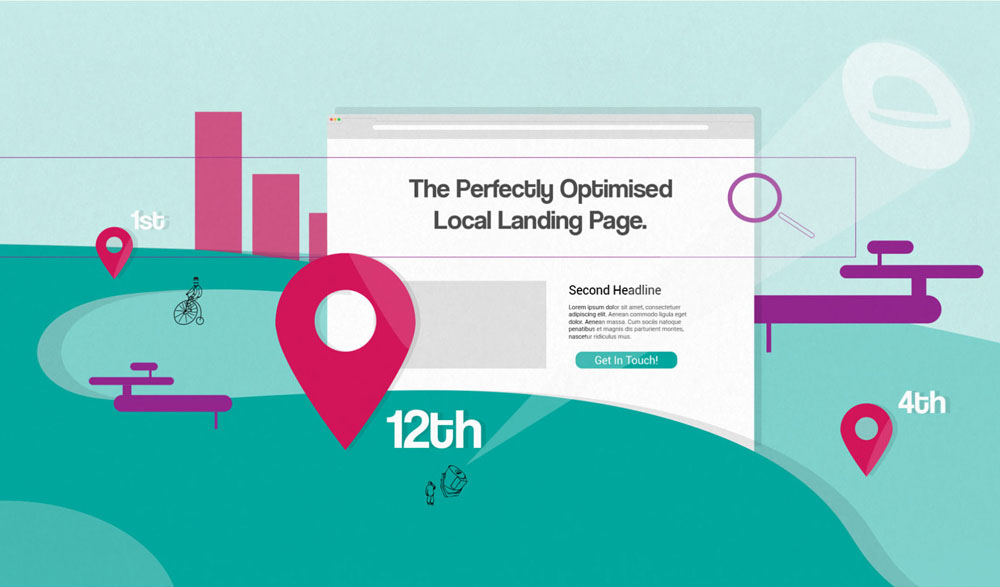SEO will always be there as long as digital is there
Search Engine Optimization (SEO) has become an irreplaceable part of all digital marketing strategies. No company can afford not to utilize the variety of SEO tools and methods at their disposal. The reason is simple – consumers have gone digital. To ensure stable growth, every business needs to be visible in the highly competitive online market.
Let’s talk about SEO for small businesses. Right now, there are approximately 30 million small businesses in the US. That makes small businesses the majority of all companies in the country. In fact, their grip on the market is so firm that they hold 54 percent of all sales in the US.
Do you know what’s driving them? It’s marketing automation and digitalization.

Digitalization shapes consumer behaviors and affects small businesses more than anything else. Here is some data that explains this:
- About 70 to 80 percent of people look for a company online before they visit a store or make a purchase.
- Nearly 60 percent of all Google searches now come from mobile devices.
- 17 and 25 percent of small businesses are investing in SEO and online marketing respectively.
- 61 percent of marketers cite improving SEO and search engine rankings as their primary objective.
- 70 of digital marketers say that video content leads to more conversions than all other types of content.
Now, it should be a bit clearer why SEO is important.
However, success in the SEO game requires a right balance of strategic and creative thinking. This is especially true for small businesses, which often face financial and manpower constraints.

To help small business owners navigate the murky waters of SEO, we’ve compiled this list of the best SEO strategies for small businesses.
Implement long-tail keywords
The days of targeting specific keywords and writing 500-word articles on keyword topics have long passed. Nowadays, long-tail keywords drive the success of online businesses.
In fact, research has shown that long-tail searches provide 2.5 times better results than short-tail keywords. This is why you should develop your content creation strategy around keywords.
In case you’re not sure how to find long-tail keywords, you can play around with the Google’s search function. Type in words relevant to your business and see what the search engine recommends. This will give you a few ideas about what keywords to target.
However, there’s a better way to research long-tail keywords. The Adwords Keyword Planner allows you to research keywords more quickly and easily. This free tool suggests keywords based on your entered terms.
Optimize meta descriptions
You should always look to optimize your meta descriptions. Meta descriptions are typically not seen on the website. Still, search engines use them to rank websites. This means you can optimize your meta descriptions to boost your organic traffic.

But how can you do that? Well, you can first study your search queries to see what kinds of descriptions rank the highest. Then, you can create meta descriptions with actionable keywords, i.e. keywords that represent calls to action. For example, buy a Christmas sweater is a great actionable keyword.
Your users should always feel encouraged to make an action on your website.
Create local landing pages
Practice shows that personalized and localized content works the best.
That means you should consider creating a separate landing page for each city where you offer your services. However, before you do that, you should first identify all the major cities in which your business operates. There’s no point in creating local pages if you can’t provide service in the area.

After that, you can create localized landing pages to boost your visibility. If you need help with this, you can try out Google My Business. It’s 100 percent free!
Focus on creating visual content
The old SEO saying says Content is king, but you can’t create just any content. If you want to succeed, you have to create content that is visually appealing. However, the content can’t just be visually appealing. It has to provide real value to the visitor.
You need to create highly relevant texts with high-resolution images that help the reader understand your text. This way, the visitor will be more engaged with your content and he will be more likely to share it with others.
Don’t forget that web design plays an important role in SEO as well.
Make your website responsive

As we’ve mentioned earlier, the majority of Google searches comes from mobile devices. Needless to say, you should be looking to tap into the mobile market before your competition.
To do that, you will need to create a fully optimized website that looks good on all devices.
Your design needs to be responsive. Your visitors need to have a seamless viewing experience, whenever and wherever they decide to open your website.
Integrate social media

In the past, social media marketing was usually implemented as a separate strategy. But today, businesses need to integrate social media into their SEO efforts. That is the only way to produce the best marketing results.
Brands are going social because their consumers are going social. And you should follow suit. You should share your content on all social media channels. Social media posts can get people talking about your business. In the long term, that increase your brand awareness.
Create an FAQ page
Most businesses don’t realize this, but users often look for answers to specific queries online. Did you know that these questions are a great opportunity to boost your organic search traffic?
That’s right. You can provide answers to common search queries by creating an FAQ page. This will not only increase your reach, but it will also improve the authority of your business. In addition to that, you can use the answers to convert your website into a lead-generating machine for your business.
Use pay-per-click advertising
In the end, it’s important to emphasize that organic growth can only get you so far. To get the optimal results, you will need to incorporate pay-per-click advertising in your overall marketing strategy.
PPC ads represent a major portion of mobile screen space. Small businesses should be looking to utilize this to their advantage. By targeting low-competition keywords, you can raise your brand awareness and generate new leads. What’s more, you can do it with little to no investments and a fantastic return on investment.

Now, if you’re thinking that search engine optimization seems easy, you’re wrong. There’s no doubt about it. A good SEO strategy requires careful planning and implementation. It’s not something you can do overnight.
However, if you use the tried and tested SEO methods and continuously invest in the right digital marketing tools, your business will grow. Also, make sure to always follow your progress using SEO tools.
When it comes to SEO for small businesses, consistency is key. You need to devise a strategy and consistently work to implement and improve it. Your company will see no benefits from temporary SEO efforts and short-term thinking. Take your time with SEO, it will pay off later.

























